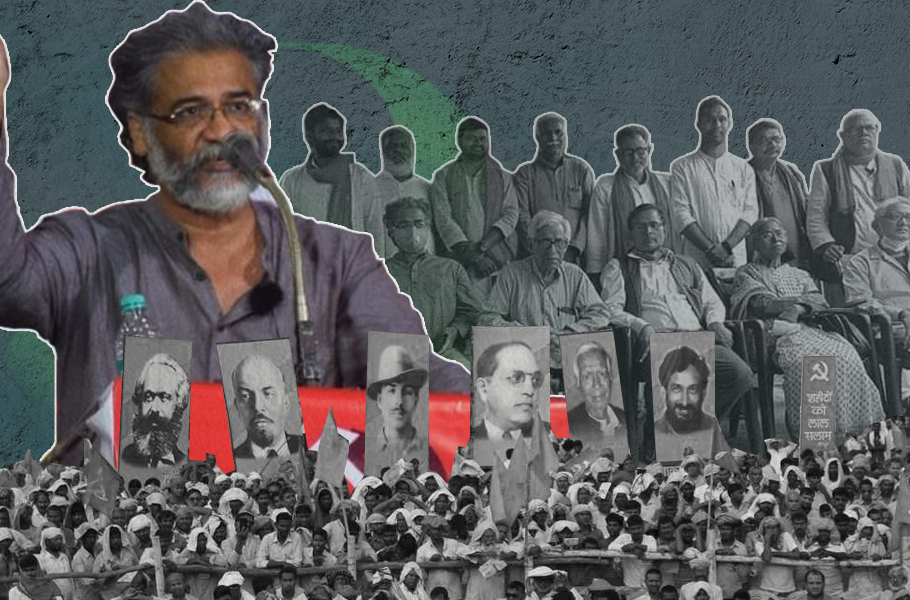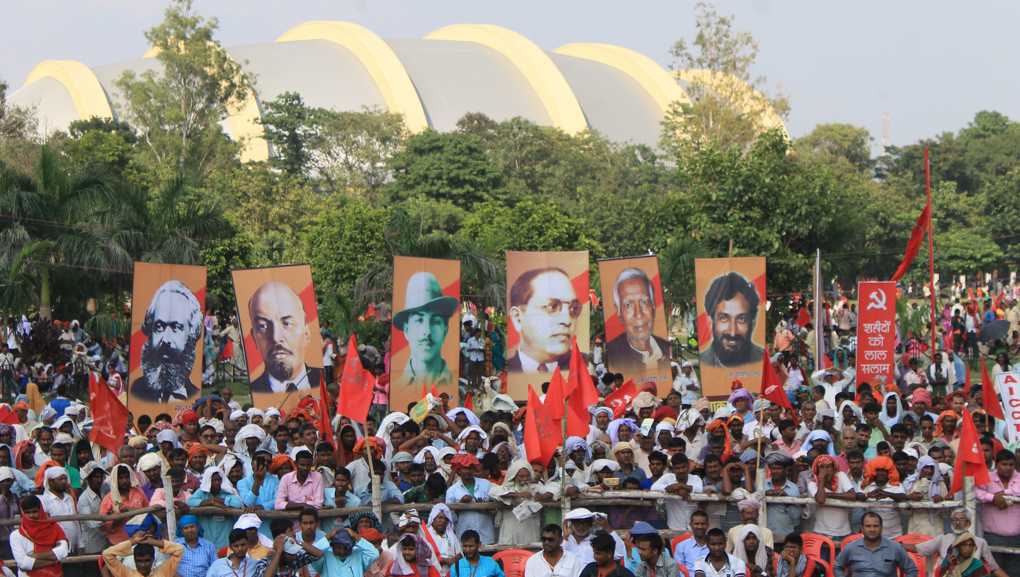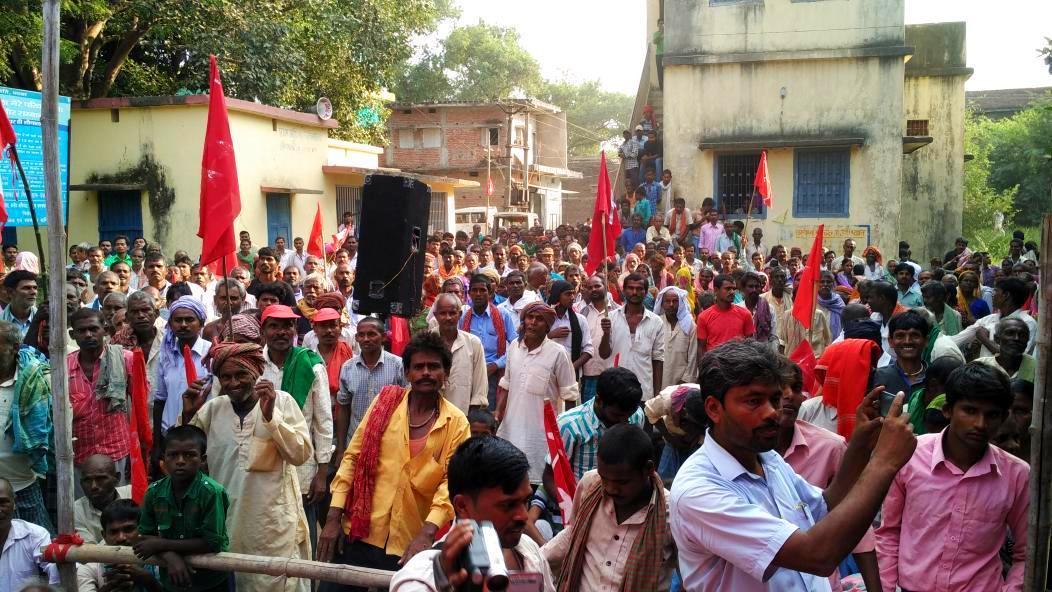
- Home
- News
- Analysis
- States
- Perspective
- Videos
- Education
- Entertainment
- Elections
- World Cup 2023
- Features
- Health
- Budget 2024-25
- Business
- Series
- NEET TANGLE
- Economy Series
- Earth Day
- Kashmir’s Frozen Turbulence
- India@75
- The legend of Ramjanmabhoomi
- Liberalisation@30
- How to tame a dragon
- Celebrating biodiversity
- Farm Matters
- 50 days of solitude
- Bringing Migrants Home
- Budget 2020
- Jharkhand Votes
- The Federal Investigates
- The Federal Impact
- Vanishing Sand
- Gandhi @ 150
- Andhra Today
- Field report
- Operation Gulmarg
- Pandemic @1 Mn in India
- The Federal Year-End
- The Zero Year
- Premium
- Science
- Brand studio
- Home
- NewsNews
- Analysis
- StatesStates
- PerspectivePerspective
- VideosVideos
- Entertainment
- ElectionsElections
- Sports
- Loading...
Sports - Features
- Budget 2024-25
- BusinessBusiness
- Premium
- Loading...
Premium

After Bihar resurgence, is the Left finally on the right track?

Just as political commentators started writing epitaphs of the communist movement in India, it stirred back into the reckoning with an impressive showing in just-concluded Bihar assembly elections, raising hopes of its revival. Even before Bihar happened, class politics has been made relevant in Indian politics again by a string of decisions taken by Narendra Modi’s BJP-led central...
Just as political commentators started writing epitaphs of the communist movement in India, it stirred back into the reckoning with an impressive showing in just-concluded Bihar assembly elections, raising hopes of its revival.
Even before Bihar happened, class politics has been made relevant in Indian politics again by a string of decisions taken by Narendra Modi’s BJP-led central government, which has severely affected a large section of labourers and peasants.
The most enduring and poignant picture of the COVID-19 epidemic in India has been the harrowing journey of lakhs of migrant workers back to their homes from cities on foot with their children in tow. The gruelling exodus was triggered by an abrupt announcement of a nationwide lockdown by Prime Minister Narendra Modi on March 24, blissfully unaware of the devastating consequence of his dramatic decision on India’s poor and marginalised.
The unplanned and poorly managed lockdown is not the only cause of ennui and despair though. Price rise, imposition of new farm and labour laws, move to privatise public services such as railways, wage cut, job loss among others added to the woes of proletariats.
- CPI, the oldest left party in India, was formed on Dec 26, 1925, in Kanpur, five years after it was seeded in Tashkent by MN Roy, who was also the founder of the Communist Party of Mexico (1919), the first communist party outside Russia
- Initially, the party was named Indian Communist Party and was composed mostly of young students from former Muhajirs from India. Muhajirs were Muslims on self-imposed exile from colonial India
- After the formation in Tashkent, it approached activists such as Muzaffar Ahmad, SA Dange, Singaravelu Chettier and others who were organising small communist groups in various parts of India. The CPI led armed rebellions in Telangana, Tripura and Kerala
Farmers are also on the warpath over a drop in returns for their produce, forcible land acquisition, cut in farm subsidies and opening up of the agriculture sector to corporate entities.
To protest against the alleged anti-labourer and anti-farmer policies of the Modi government, both sections are now gearing up for a nationwide joint protest on November 26 and 27.
Long live protests!
The excitement was palpable in the joint meeting of the representatives of the joint platform of Central Trade Unions (CTUs) and Independent Sectoral Federations and Associations and All India Kisan Sangharsh Coordination Committee), an umbrella body of over 300 constituent organisations held on November 19.
The meeting was convened to take stock of the preparations for the November 26 general strike and the ongoing resistance by farmers in various states against the newly passed farm laws. On November 27, they will together march to Parliament.

Emerging from the meeting, general secretary of the All India Trade Union Congress (AITUC) and National Secretariat member of the Communist Party of India (CPI) Amarjeet Kaur said they were receiving overwhelming support for the agitation, billed as a potential watershed moment in peoples’ struggles in India.
Instead of formulating policies for the last man in the line, the present NDA government was ensuring benefits to those at the top of the food chain, pushing people to go for agitations to protect their rights, Kaur said.
“In addition to workers and farmers, people from all walks of life and all sections of the society, viz., students, youth, women have been coming forward extending their whole-hearted support to these struggles,” she added.
The ensuing protest programmes are a continuation of a series of periodical stirs organised by coal workers, bank and insurance employees, BSNL employees, oil and gas sector employees, transport workers, defence production employees, Left parties, etc. in the past few months.
Street leaders
Amidst the raging pandemic in Bihar, when major political parties restricted their public engagements to social media, the lesser significant Communist Party of India (Marxist-Leninist) Liberation was on the streets, protesting labour woes and alleged mismanagement of the pandemic in the street.
Thousands of CPI(ML) Liberation cadres even took out a protest march in Bihar capital Patna on July 23, defying the lockdown. In neighbouring West Bengal, another Left outfit, the Communist Party of India (Marxist) opened community kitchens in various parts of the state to provide “highly subsidised (at ₹20)” meals to workers in the formal sectors, who lost income during the lockdown.
- CPI(M) was formed from after a split in CPI in 1964 in Calcutta due to ideological differences over whether to adopt the Soviet path or the Chinese path
- A section led by Dange was in favour of toeing the Soviet line
- The group that wanted to follow the Chinese principle of a mass party with a class line with national characteristics broke away to form the CPI(M)
The continuous protests organised by the communist parties since September in different districts of Bengal against the farm laws brought in by the Centre are drawing good crowds, raising hope of Left leaders ahead of next year’s assembly elections in the state, where the Left Front has been relegated to a fringe player from a formidable ruler.
“The pandemic-infused labour distress provided us an opportunity to renew our contacts with people, which we had somewhat lost due to the growing influence of market-driven economy where our core issue of workers’ rights had become unappealing,” admits a CPI(M) leader from West Bengal who did not wish to be named.
The growing resentment of the working classes and farmers against the policies of the Central government made the situation ripe for a class movement, but how far the Left parties would be able to take advantage of it to gain electoral significance remains doubtful, says Dr Anil Kumar Thakur, a professor of political science in Delhi University.
At a crossroads, a hundred years after
True, the Communist movement in India is at a crossroads hundred years after the political ideology was seeded in India, inspired by the Russian Bolshevik Revolution.
The coming elections in the five states of Assam, Bengal, Tamil Nadu, Puducherry and Kerala will be crucial for the Communist parties. Among these, the Left parties have comparatively better organisations in Kerala and Bengal, while they also have significant presence in some pockets of Tamil Nadu where the CPI(M) and the CPI had won two seats each in the 2019 parliamentary elections.

Interestingly, Kerala and Bengal are the only states where the BJP or its allies have never held power. The saffron party, therefore, is this time pulling all stops out to conquer these last frontiers. In Bengal in particular the BJP sniffs possible victory in the 2021 elections.
Lessons from Bihar
As the BJP now shifts its focus to Bengal, the Left parties will do well if they take a few lessons from results in Bihar where the CPI, CPM and CPI(ML) Liberation together won 16 seats contesting 29, logging a success rate of 55%.
Apart from re-establishing the local-connect, highlighting issues on the ground, the Left in Bihar also did a couple of other things right, such as picking young candidates and making the BJP its sole target.
To ensure that there was no further split in anti-BJP votes, they aligned with the RJD-led Grand Alliance even after their demand to contest in 50 constituencies had been snubbed, and were given only 29 seats.
“Our prime concern in Bihar was to consolidate the anti-BJP vote as much as possible,” says CPI(ML) general secretary Dipankar Bhattacharya, the architect of impressive performance of the Left parties in the just-concluded elections.
Bhattacharya’s CPI(ML) won 12 of the 19 seats it contested in Bihar at a strike rate of 63.15 per cent. In the 2015 elections, the CPI (ML) had won three seats while other two Left parties could not open their account.
- CPI(ML) Liberation is the offshoot of CPI(ML) formed by Naxalite leader Charu Mazumdar
- Unlike CPI(ML), CPI(ML) Liberation believes in democracy and does not engage in ‘armed struggle’
- In Bihar, the party gained ground through the Bhojpur Movement after the death of Charu Mazumdar
- Through ‘caste wars’, the movement brought in social transformation in central Bihar, challenging the feudal order and upper-caste hegemony
- There are many other smaller communist parties in India such as Communist Party of India (Marxist–Leninist) Red Star and Communist Party of India (Marxist–Leninist) Red Flag
- There are also underground communist outfits such as Communist Party of India (Maoist) and Communist Party of India (Marxist–Leninist) Naxalbari
To repeat the Bihar performance in Bengal, Bhattacharya feels that the Left must consider the BJP and not the TMC as its prime enemy, a proposition ruled out by the leadership of the CPI(M), the biggest Left party in the state.
CPI(M) general secretary Sitaram Yechury maintained that to defeat the BJP, it was necessary to first defeat the Trinamool Congress. The Left leadership in Bengal too endorsed this theory even though it has been well established that based on this strategy, a large chunk of Left supporters voted for the BJP in the last parliamentary elections just to defeat their No. 1 enemy, the TMC.
This strategy put under question the ideological mooring of the Bengal Left.
“Unless the Left does the course correction and make the BJP its prime target, it is likely that its supporters again vote for the BJP in the ensuing assembly elections thinking that their first priority should be to dethrone the TMC,” said Nirmalaya Banerjee, a Kolkata-based political commentator and former journalist.
Bhattacharya also alleges that the BJP is growing in Bengal at the expense of Left parties.
Left parties are also very rigid in maintaining status-quo in their organisational set ups, not promoting enough youth to leadership positions. This is discouraging the youth from taking up membership of Left parties in Bengal.
Lack of young leaders
According to an internal data of the Bengal CPI(M), the share of members under the age of 31 dropped to 7.68% from 9.09% in 2019. The group comprised 13.5% of the party members in 2015.
Lack of young leadership is the biggest hurdle for the two main Communist parties in India CPI (M) and the CPI, points out Thakur, adding that apart from Kanhaiya Kumar, they did not have any energetic and charismatic young leaders to connect with masses.
“Even the ideological commitment is waning, which led to comrades turning saffron in Bengal for their political survival against the TMC. I don’t see an immediate change in that,” he said.
To do a Bihar in Bengal, the Left needs to get its priority right.

